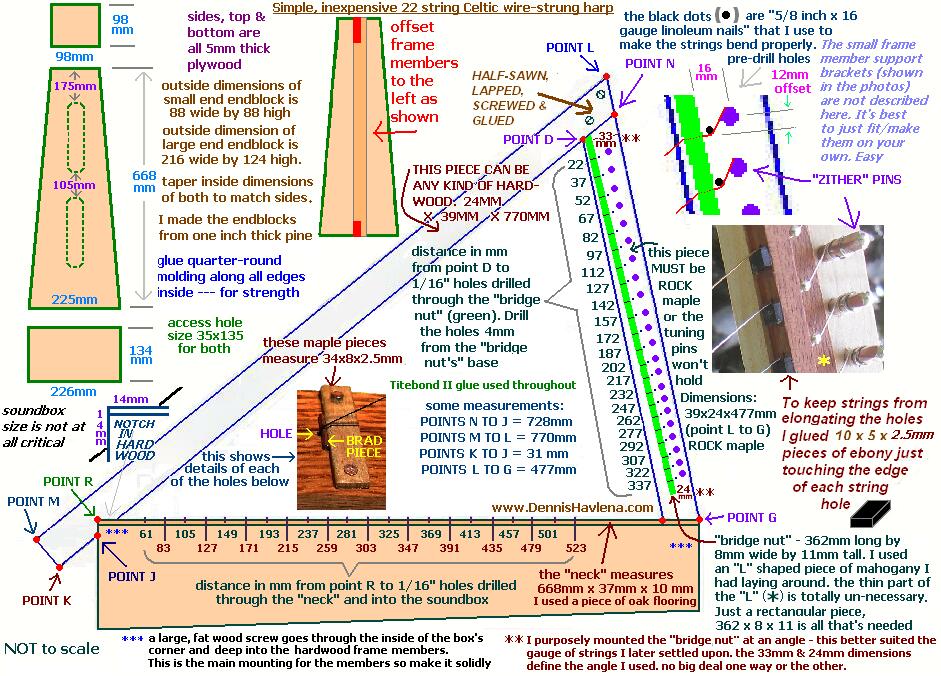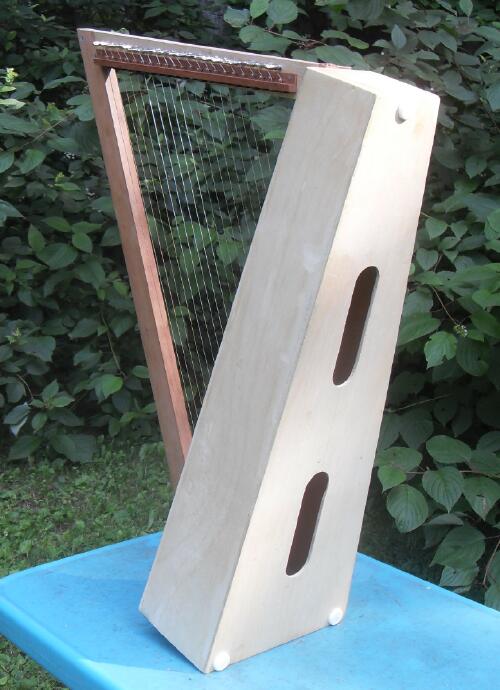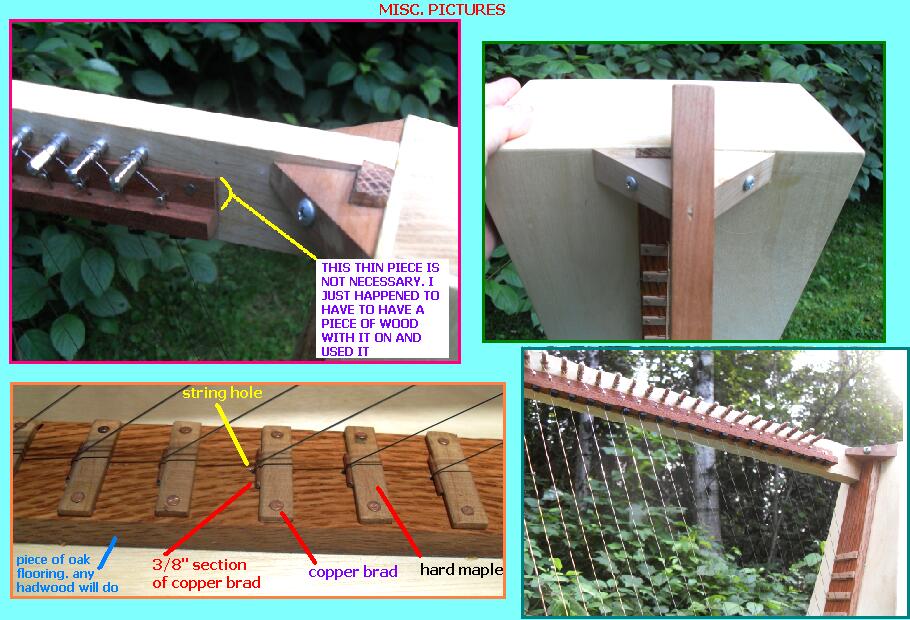
Click here to access
my webpage



Additional notes:
The photos and illustrations should show well how to build this harp.
Without frets, curves etc, not much is critical! Maintain uniform
string-spacing, gauge & length (as per my dimensions) and all should
be ok.
I do so much experimenting that I find it useful to buy rolls of
"piano wire" aka "music wire" in various gauges. This is not that
expensive - ie: a fat roll of .014 wire costs just over ten dollars.
elderly.com carries some.
Rock (aka hard) maple must be used for the pin-block piece. It's the
only common hardwood that will hold zither tuning pins without
eventually slipping! Even hard oak slips! Cabinet shope can get you
a piece for a few bucks. Be sure to use the recommended size pilot hole
for these tuners.
More info to follow.
Let me know if you build one of these things!
They sound and play every bit as good as the commercially made
wire-strung Celtic harps I've seen & are straightforward/easy
to build -- no curves to deal with etc.
The construction diagram here looks quite "hectic" -- just my attempt
to get it all on one page. One step at a time construction makes this
project flow easily tho.
String gauges:
I have been experimenting with lots of various string-gauge configurations,
having settled on these (from thickest to thinnest, in thousandths of an
inch) - .038 wound; .026 wound; .026 wound; .025 wound; .024 wound;
.020; .020; .020; .020; .020; all of the remaining 12 highest-pitched
strings are .013. Obviously, feel free to experiment. A gauge or so
either way should work.
The lowest pitched string is tuned to the C note, one octave below
middle C on a piano. The highest pitched string is tuned to the C note,
two octaves above piano's middle C. So tuning is, low to high:
c d e f g a b c d e f g a b c d e f g a b c
Even steel strings need a "stretching-in" period of time before everything
stays in tune. At first, expect to have to retune the beast every time you
play. After a week or so everything stays pretty much in tune.
Dennis Havlena - 8/9/2011
Webpage at www.DennisHavlena.com